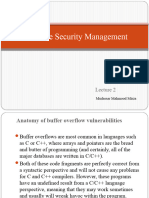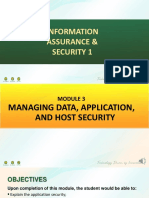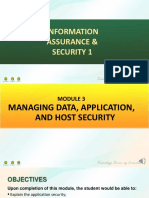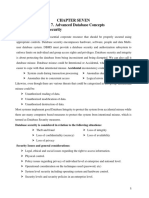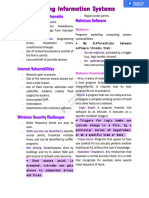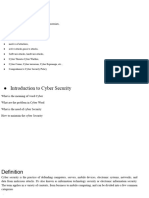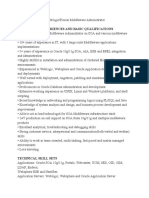0% found this document useful (0 votes)
50 views14 pagesInformation and Computer Security 7
Operating system, database, and web security are important types of protection and security. [1] Operating system security ensures integrity, confidentiality and availability through techniques like regular patches, antivirus software, firewalls, and secure user accounts. [2] Database security protects the database, data, management system and applications through encryption, access controls, and firewalls. [3] Web security reduces security risks from malware and phishing through solutions like firewalls, intrusion prevention systems, sandboxing, and URL filtering.
Uploaded by
Jehad MogyCopyright
© © All Rights Reserved
We take content rights seriously. If you suspect this is your content, claim it here.
Available Formats
Download as PDF, TXT or read online on Scribd
0% found this document useful (0 votes)
50 views14 pagesInformation and Computer Security 7
Operating system, database, and web security are important types of protection and security. [1] Operating system security ensures integrity, confidentiality and availability through techniques like regular patches, antivirus software, firewalls, and secure user accounts. [2] Database security protects the database, data, management system and applications through encryption, access controls, and firewalls. [3] Web security reduces security risks from malware and phishing through solutions like firewalls, intrusion prevention systems, sandboxing, and URL filtering.
Uploaded by
Jehad MogyCopyright
© © All Rights Reserved
We take content rights seriously. If you suspect this is your content, claim it here.
Available Formats
Download as PDF, TXT or read online on Scribd
/ 14









